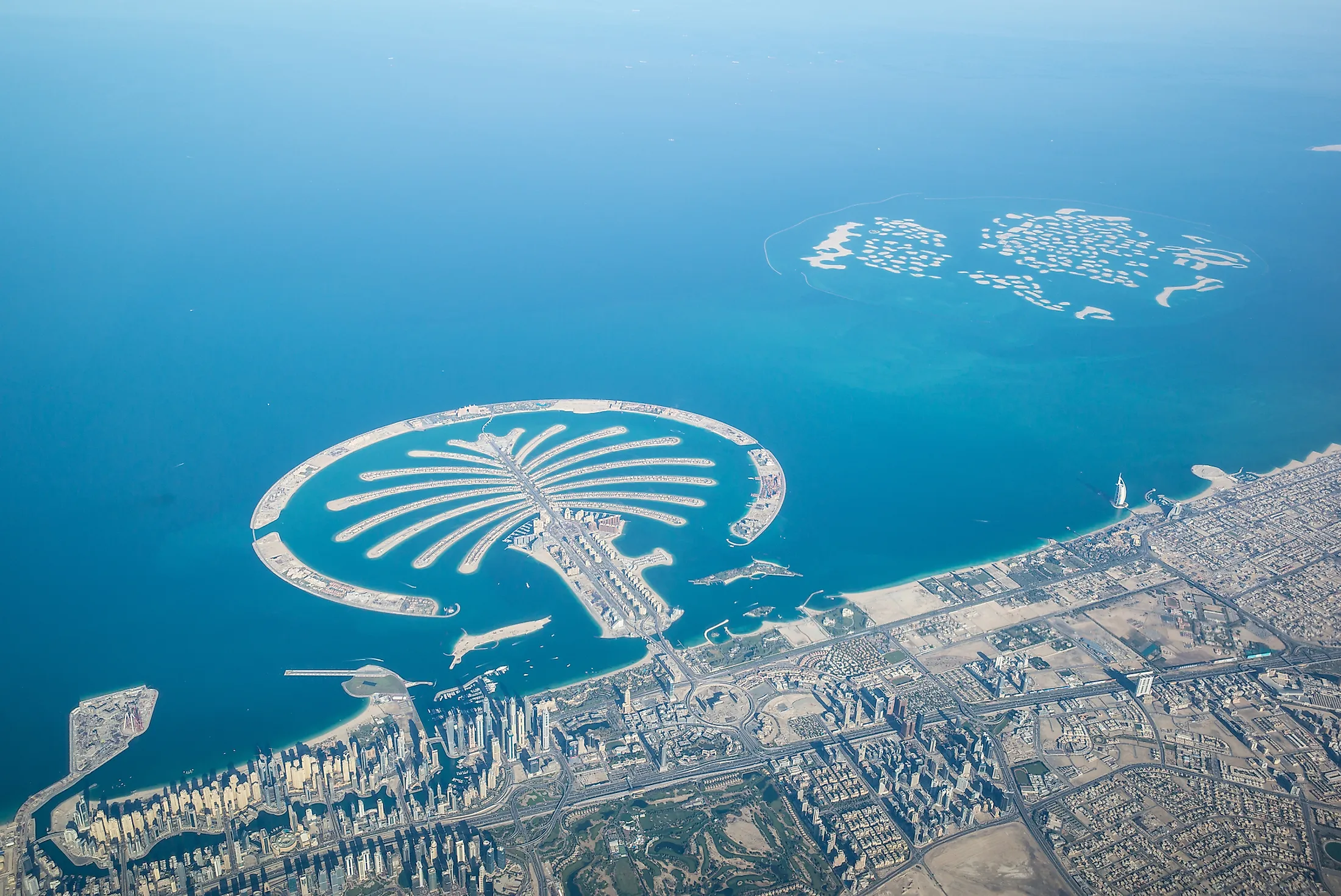
Man-Made Islands Of Dubai
A collection of artificial islands have been under construction in Dubai, the most populous city in the United Arab Emirates and the destination for the wealthy. Geared to create more rental space, it is also meant to prepare for the looming depletion of the oil supply that the nation will have to one day face. An innovative way for land reclamation, there have also been parallel record-breaking projects on them, including establishing the world's largest observation wheel on the still-under-construction Bluewaters Island and the renowned Burj Al Arab Jumeirah, on its very own island. Fully established, the Palm Jumeirah is currently the only such island serving its purpose in enriching Dubai. The construction of three more, the Palm Jebel Ali, the Deira Islands, and The World Islands, has been stalling for economic reasons.
The Palm Jumeirah
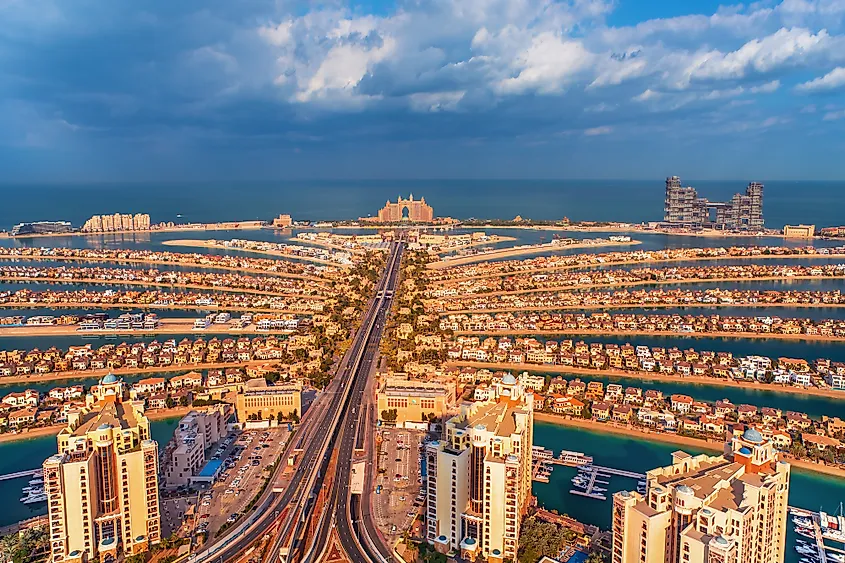
The creation of the Palm Jumeirah, resembling, from an aerial perspective, a palm tree within a circle, started in 2001. Completed by 2006 and composing a land area of over 5.6 square kilometers, the crescent around the tree serves to break water, with two gaps allowing water circulation. The island also has 17 fronds, representing a real palm tree's greenery, containing luxury hotels, villas, and resorts. The trunk of the palm holds apartments, hotels, and retail shops. Tourists can access this island via the Middle East's first monorail system from mainland Dubai, while an underwater tunnel connects it to the top-most frond.
Nakheel, a real estate company that Dubai's government now owns, developed the island, while Helman Hurley Charvat Peacock, an American architectural firm, designed the master plan. Like much in Dubai, the country's petroleum income financed the island's construction.
Altogether, this first-born and only fully completed and functioning artificial island in the world has around 10,000 residents. Still, home to only half the number of residents as Nakheel prospected for the Palm Jumeirah, the islanders complain about the islands' "weird" or inconvenient fragmented shape and the stagnant water with algae and mosquitoes.
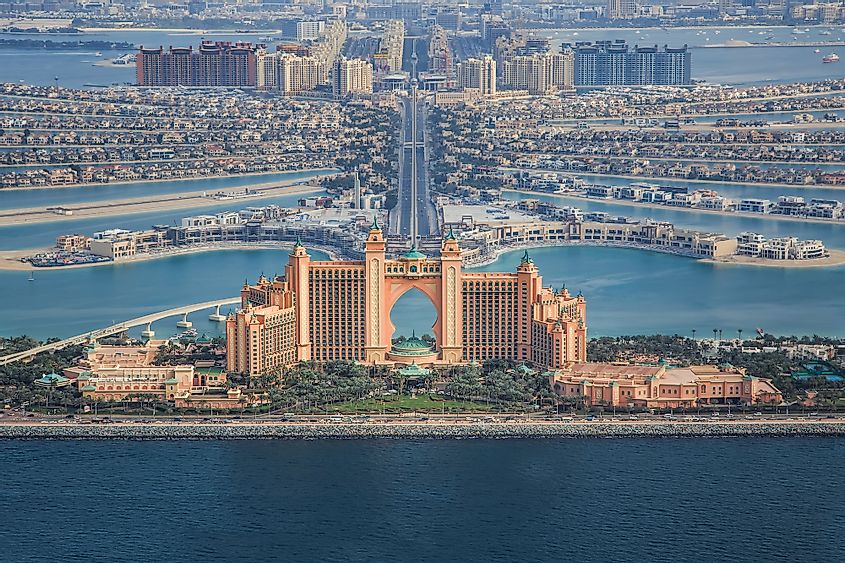
The largest of the hotels in Palm Jumeirah, the Atlantis, opened in 2008. It has an adjacent water park covering 0.45 km2 and is located at the top of the almost 11-km-long crescent. Its aquarium holds 65,000 sea creatures and a lagoon for dolphin interaction. Among other services and amenities, there are over 20 restaurants, high-end boutiques, a spa, as well as underwater suites for those wishing to stay a night or a few. The Palm Tower on the island, containing St. Regis Dubai, was set to open in 2018 but opened only this year, in May, while the Nakheel Mall was set to open in late 2017 but instead opened at the end of November in 2019.
Burj Al Arab
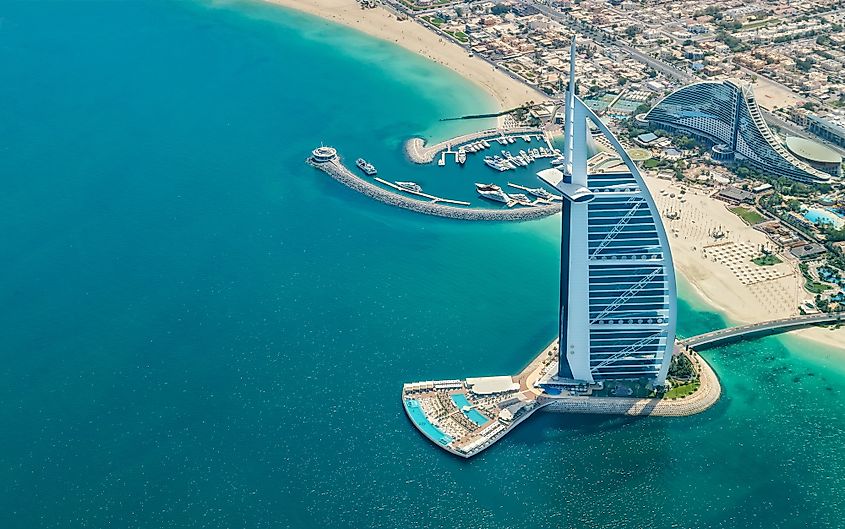
The Burj Al Arab Hotel is of the most iconic and expensive structures globally. It stands at 1,053 feet and is supported by thick subsurface or underwater columns, running 45 meters deep into the earth. Held together by sand, this luxurious 5-star resort, completed in 1999, sits on its own designated artificial island and features a private beach, a helipad, and an outdoor terrace jutting out over the ocean. The interior is made of gold, gilded into all imaginable surfaces, with 24-karat gold leaf covering about 1,790 square meters of the hotel. The elevator is also gold-plated, while over 30 types of Italy- and Brazil-imported marble can be found in various interior features. The hotel's indoor fountain is the largest of its kind globally, shooting water for over 42 meters into the air.
The construction began when the local real estate conglomerate, Nakheel, ordered to dredge 3 billion cubic feet into the floors of the Persian and Arabian gulfs. The surrounding crescent, also serving as breakwater of seven miles long, was piled out of seven million tons of mountain rock.
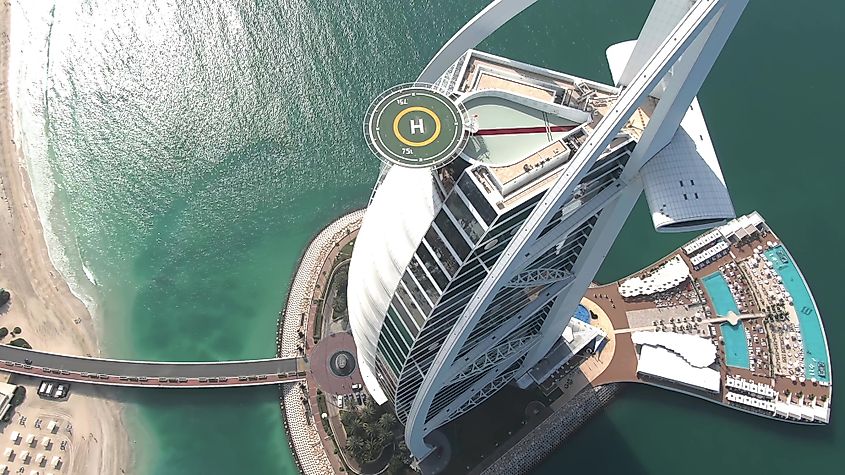
The reinforcing base was created by only using locally quarried rock, completely lacking concrete or steel in its composition, while the sand dredged from the gulf was re-deposited to shape the islands. In the final stages, the six-lane undersea tunnel was dredged to connect the island to the beaches on the crescent for public use. The complications faced by the developers include sand erosion and liquefaction, while the changed gulf current today is eroding the unsupported places of the city's coastline.
Unexpectedly, at least to the prime minister himself, there has been a shocking effect on the ecosystem from establishing this island. Having faced criticism for other projects in the past, Dubai has never faced so much from the environmentalists before. Firstly, the dredging of the ocean's floor has drastically changed the current and the erosion patterns in the Persian Gulf. It also led to the decay of the whole square mile of the living coral reef. To counteract this, the island developers descended two American fighter jets onto the ocean bottom to grow a new reef, claiming that the island's breakwaters would attract more sea life to inhabit the depleted waters. Still, the World Wildlife Fund insists that the UAE is running five times more unsustainable than any other country in the world.
The World Islands
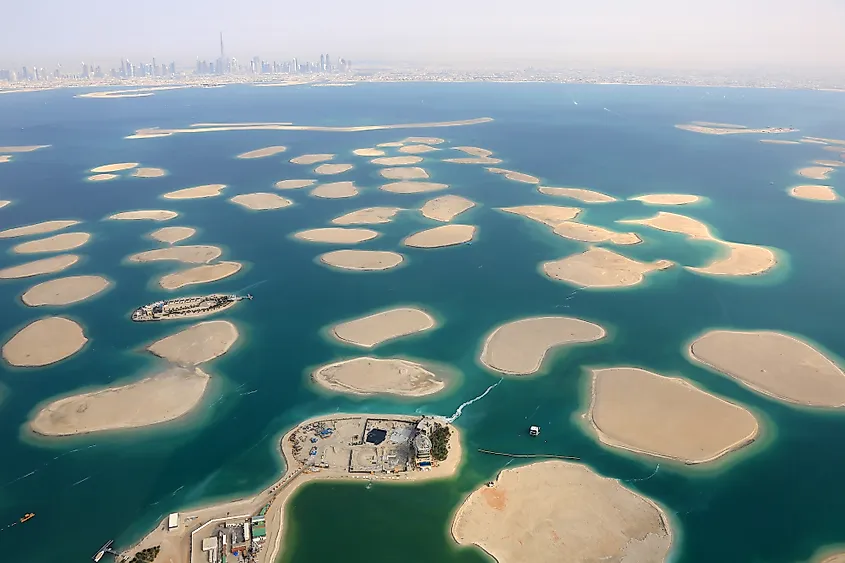
Not yet completed, the construction of the World Islands was launched in 2003 to create around 300 artificial islands representing the Earth's continents, with each island representing a country or a region. The Islands of Greenland was the first such island to be completed. It was gifted to the racing driver Michael Schumacher in 2006. The Lebanon Island has also been developed for commercial use of holding corporate parties and events.
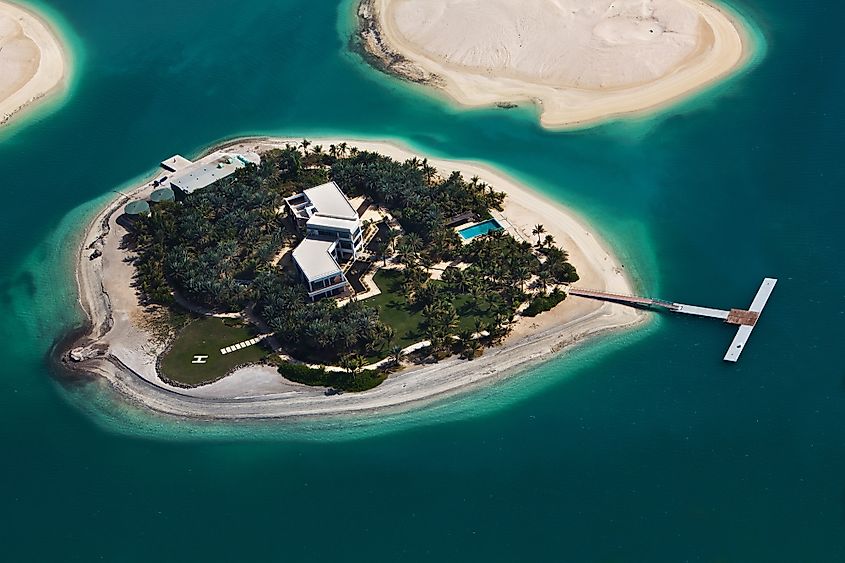
However, this ambitious project is currently shrouded in controversies. NASA suggested that these islands have been sinking into the ocean due to rising sea levels. Environmental concerns remain, and so does the massive need for funds to fuel further development on these islands.
The Deira Islands
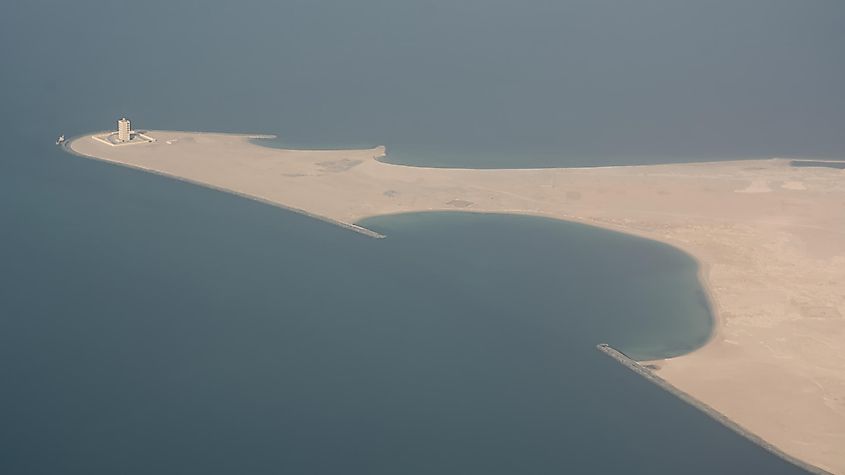
The Deira Islands was another project whose construction was stalled in 2008. It was also planned to have been shaped like a palm tree about eight times the size of Jumeirah. In 2013, Nakheel changed its mind and decided to build four smaller artificial islands with around 5,000 shops and 100 restaurants and cafes.
It was hoped that at least two of the four islands would be ready to host some 250,000 people. Still, thus far, only the south-western base portion is being developed with a purpose to hold the world's largest night market, or souk, for people to buy almost everything imaginable, from food and spices to clothing and textiles, to jewelry, to housewares. Near these islands, on the left, there are other artificial structures of Port Rashid, the Maritime City, Pearl Jumeirah, and La Mer in their early stages.
Bluewaters Island
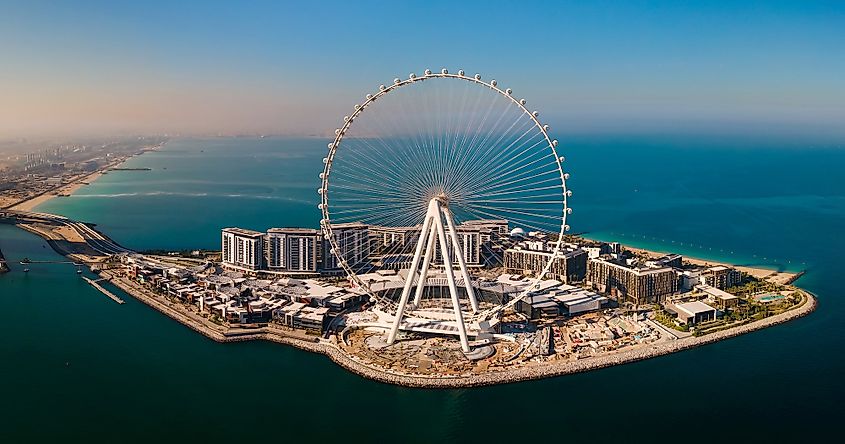
This comma-shaped island set left to the Palm Jumeirah features hotels, residential buildings, restaurants, shopping, and different forms of entertainment, including the most notable structure, the Ain Dubai or the Dubai Eye. With 48 pods and standing at 210 meters tall, Ain Dubai is the largest Ferris wheel in the world, from which the view of Dubai's skyline and shoreline are one-of-a-kind, unforgettable.
The Palm Jebel Ali
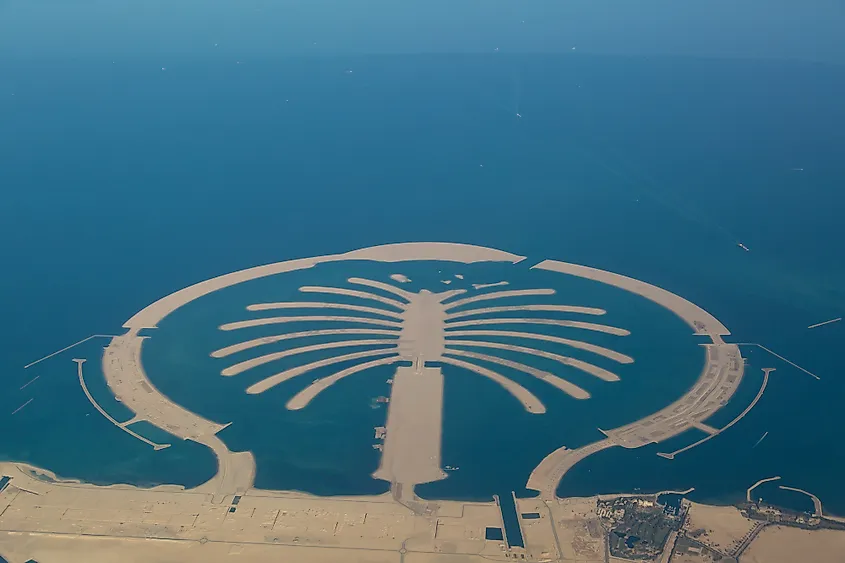
The construction of this second palm island started in 2002. It was planned to have Sheikh Mohammed's poem, "Take wisdom from the wise / It takes a man of vision to write on water / Not everyone who rides a horse is a jockey / Great men rise to greater challenges," written in miles of twisting boardwalk sprawling around it. Homes on stilts, a water park, villas, and six marinas were also to be built on the island. One and a half times and shaped similarly to the Palm Jumeirah, it was, like its aforementioned neighbors, placed on hold upon the real estate market crash caused by the world financial crisis. Unable to support the construction financially, the CEO of Nakheel officially reported that the Palm Jebel Ali is a "long-term" project and shall be "revisited at some point in the future."
To survive and even prosper without the petrodollars, the goal of the prime minister, Sheikh Mohammed bin Rashid Al Maktoum, was to turn the city into the first-class tourist mecca of the world. Upon facing the geographic challenge in that there is only so much of Dubai's coastline in the Persian Gulf to build upon, he found the answer in expanding into the ocean. By establishing the artificial islands, he hoped that profit would be gained once each island was running to its fullest potential to counteract the ridiculous amounts of money spent on them. However, due to the economic hardship situation in the world, only one of the islands, the Palm Jumeriah, is effectively running.











